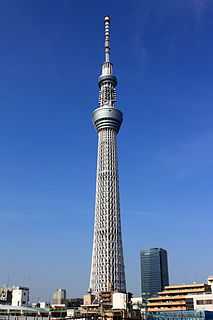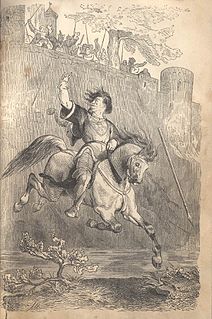
The Château de Langeais is a medieval castle in Indre-et-Loire, France, built on a promontory created by the small valley of the Roumer River at the opening to the Loire Valley. Founded in 992 by Fulk Nerra, Count of Anjou, the castle was soon attacked by Odo I, Count of Blois. After the unsuccessful attack, the now-ruined stone keep was built; it is one of the earliest datable stone examples of a keep. Between 994 and 996 the castle was besieged unsuccessfully twice more. During the conflict between the counts of Anjou and Blois, the castle changed hands several times, and in 1038 Fulk captured the castle again.

The Selke Valley Railway (Selketalbahn), Gernrode-Harzgerode Railway and the Anhalt Harz Railway were different names for the metre gauge railway in the Lower Harz, Germany, originally owned by the Gernrode-Harzgerode Railway Company.

Harzgerode is a town in the district of Harz in Saxony-Anhalt, Germany.

Güssenburg Castle is a ruined castle on a hill near Hermaringen in Heidenheim County in Baden-Württemberg, Germany. It was built around 1346, during the High Middle Ages and much of the curtain wall and keep remain.

Kaltenburg Castle is a ruined castle, located in the Lonetal between the cities of Giengen and Niederstotzingen in the district of Heidenheim, Baden-Württemberg, Germany. The castle was built during the High Middle Ages and though ruined, most of the walls are intact.
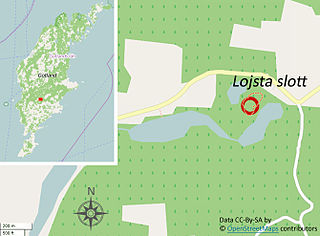
Lojsta Castle in Stånga socken on the border of Lojsta, Gotland, Sweden, is, despite its name, not a "castle" in the normal sense, i.e. it is not a palacelike manor. It is the ruins of a once fortified estate, consisting of houses surrounded by a wall and a moat.

Heinrichsberg Castle is a ruin north of Mägdesprung in the borough of Harzgerode in central Germany. It is not far from the B 185 federal road in the district of Harz in the state of Saxony-Anhalt.

The Konradsburg is a former castle, monastery and manor house near Ermsleben in the German federal state of Saxony-Anhalt.
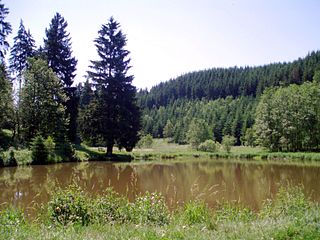
The Katzsohlteich is an artificially impounded reservoir that lies southwest of the town of Güntersberge in the Harz Mountains of central Germany and is used as a preflooder (Vorfluter) and fishpond. Only a few metres from the pond is the considerably larger lake of Bergsee, past the southern shores of which runs the Selke Valley Railway.

Hochjuvalt Castle is a castle in the municipality of Rothenbrunnen of the Canton of Graubünden in Switzerland. It is a Swiss heritage site of national significance.

Fracstein Castle is a castle in the municipality of Seewis im Prättigau of the Canton of Graubünden in Switzerland. It is a Swiss heritage site of national significance.

The Ackeburg, also called the Ackenburg, in the Harz Mountains of central Germany, is the site of a high medieval hill castle, 333.2 m above sea level (NN), in the borough of Falkenstein/Harz in Harz district in the state of Saxony-Anhalt. It was first mentioned in 1216 and was abandoned or destroyed in 1400. There was also a village associated with it, known as Akkeburg.

Old Falkenstein Castle in the Harz Mountains of Germany is the castle site or burgstall of a high medieval hill castle. It lies on the territory of Falkenstein/Harz in the state of Saxony-Anhalt in the district of Harz. It was built in the 11th century A.D. and destroyed in 1115.

Tece Castle is a ruined castle in Mersin Province, southern Turkey.
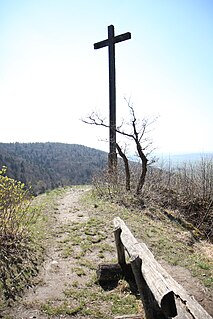
Schlüsselstein Castle was a castle and the seat of a noble family, probably dating to the High Middle Ages, the remains of which lie above the town of Ebermannstadt in the Upper Franconian county of Forchheim in the south German state of Bavaria. The site is known locally as Burgstall Schlüsselstein.

Cagliatscha Castle German: Burg Cagliatscha is a ruined castle in the municipality of Andeer in the Viamala Region of the canton of Graubünden in Switzerland.

Serviezel Castle is a pair of ruined castles in the municipality of Valsot of the Canton of Graubünden in Switzerland. Very little is known about either castle and they were probably both built in the 12th century for the Lords of Ramosch. Serviezel (Ramosch) is located in the former municipality of Ramosch, while Serviezel (Tschlin) is about 6.1 km (3.8 mi) away in the former municipality of Tschlin.

Canaschal Castle is a pair of ruined castles near Trin, Canton of Graubünden, Switzerland.







